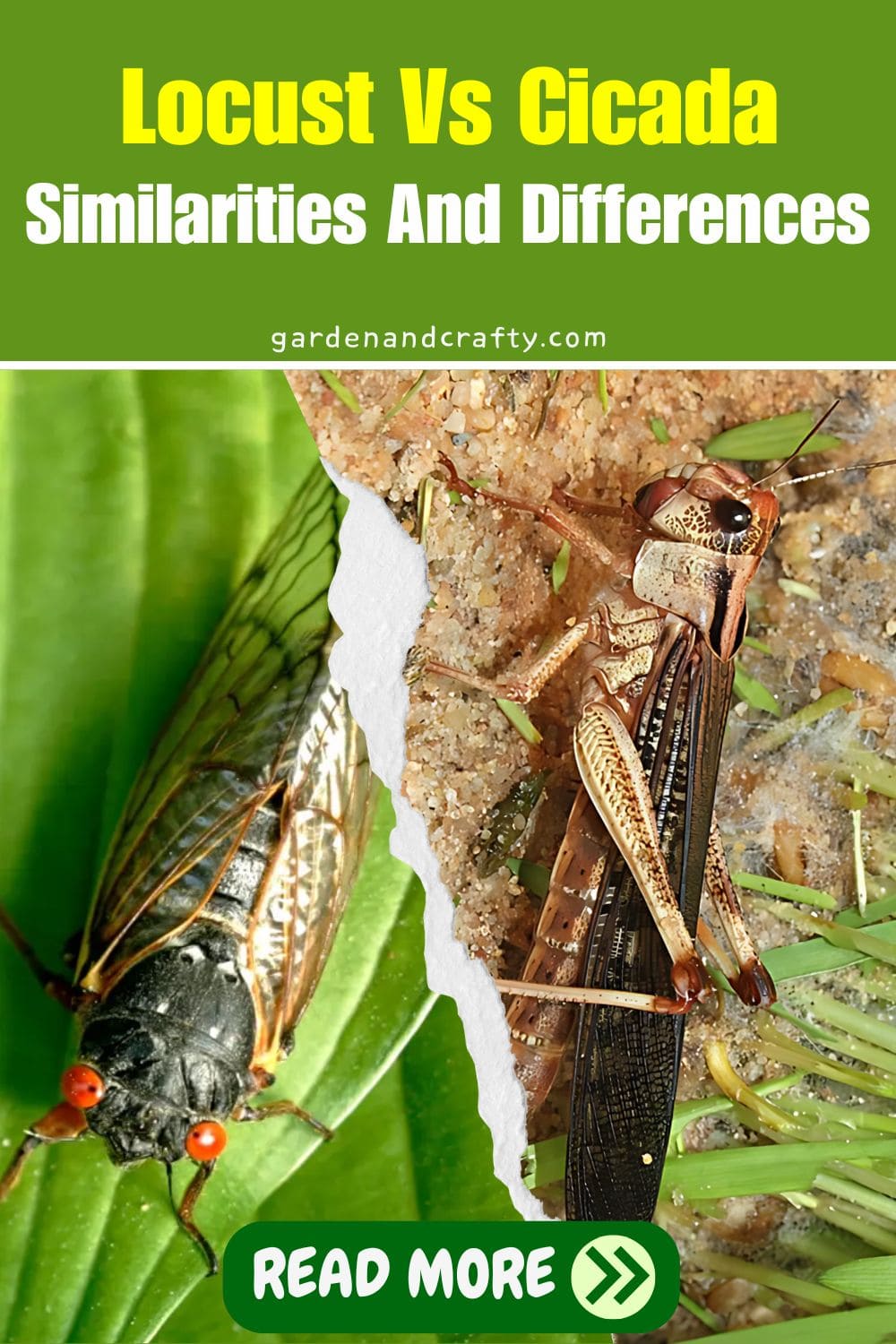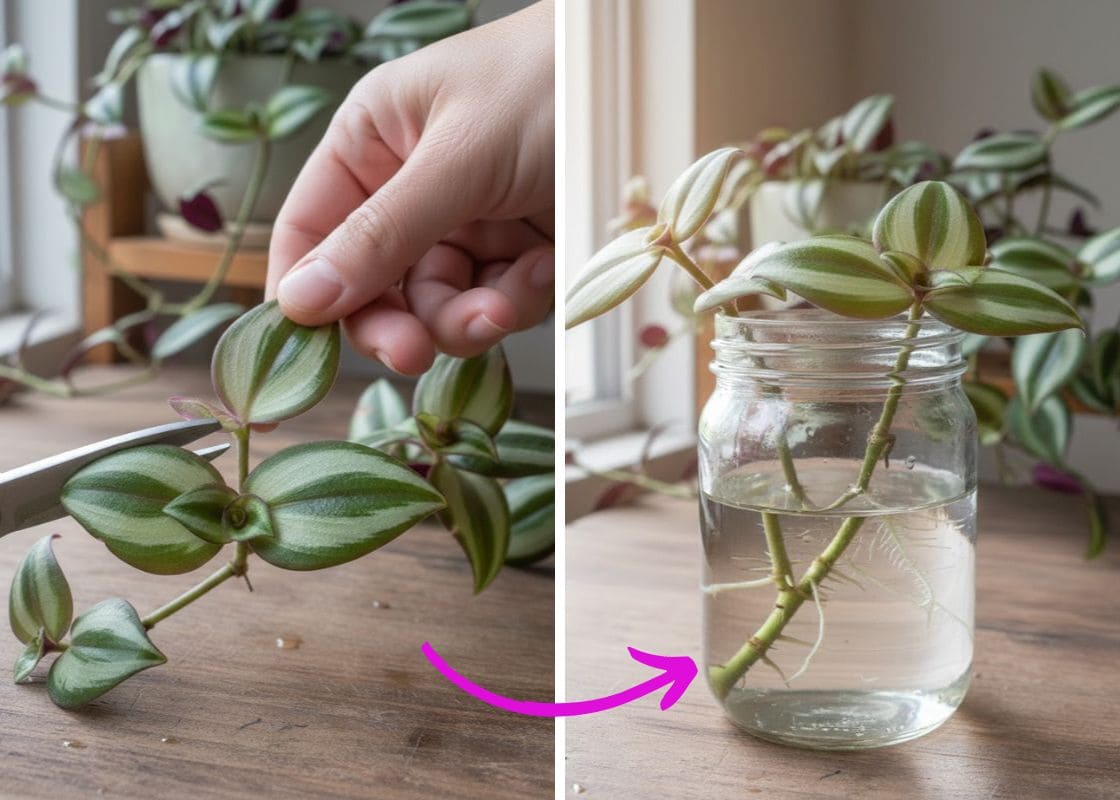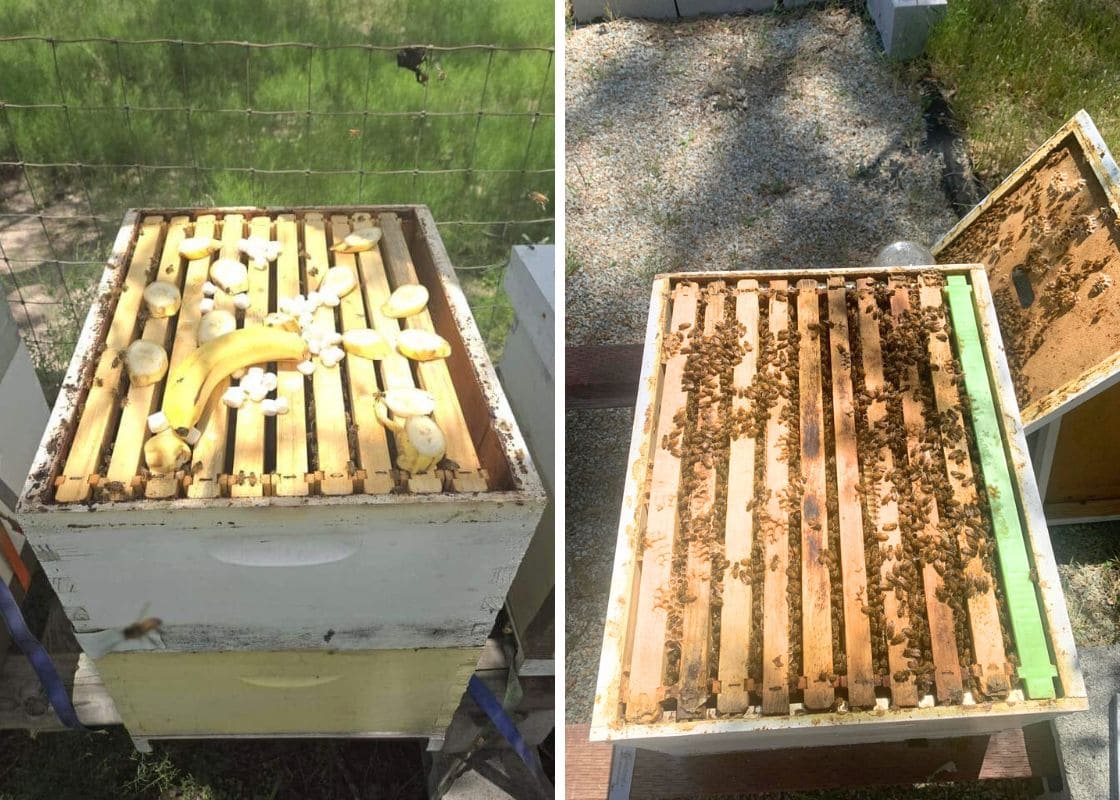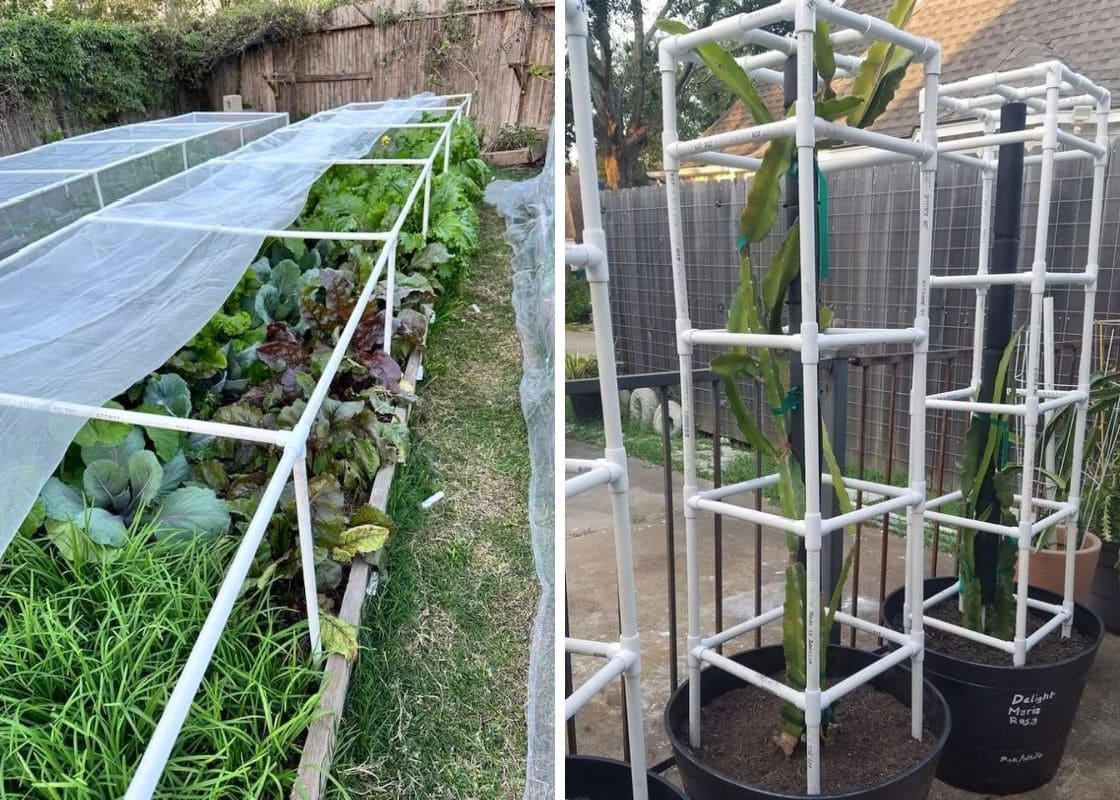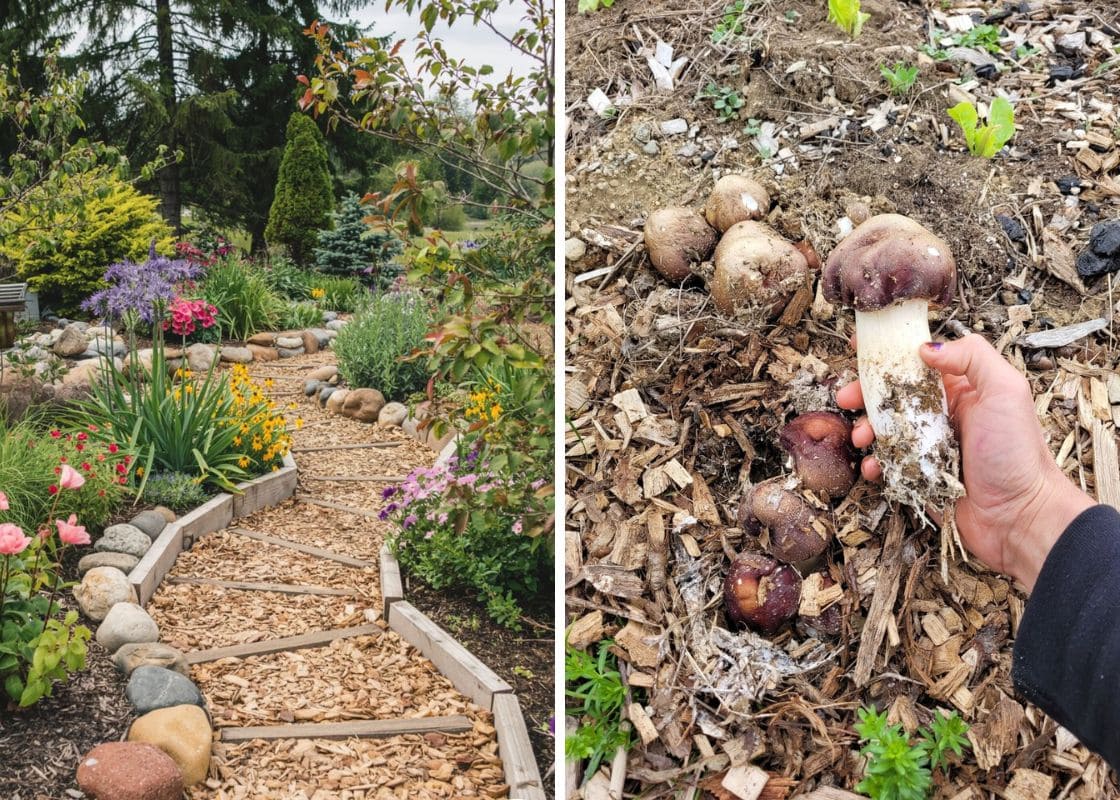Though often confused, locusts and cicadas are distinct insects with unique behaviors and life cycles.
Locusts are infamous for their destructive swarming, causing significant agricultural damage. In contrast, cicadas are known for their periodic emergence and loud mating calls.
Recognizing the differences between these insects is vital for pest management and appreciating biodiversity.
Summary:
- Locusts and cicadas differ in physical appearance; while locusts swarm and cause major crop damage, cicadas emerge periodically and are known for their loud calls.
- Both belong to the class Insecta, share herbivorous diets, and have similar life cycle stages.
- Early settlers mistook cicadas for locusts, a misconception that continues due to cultural and linguistic traditions.
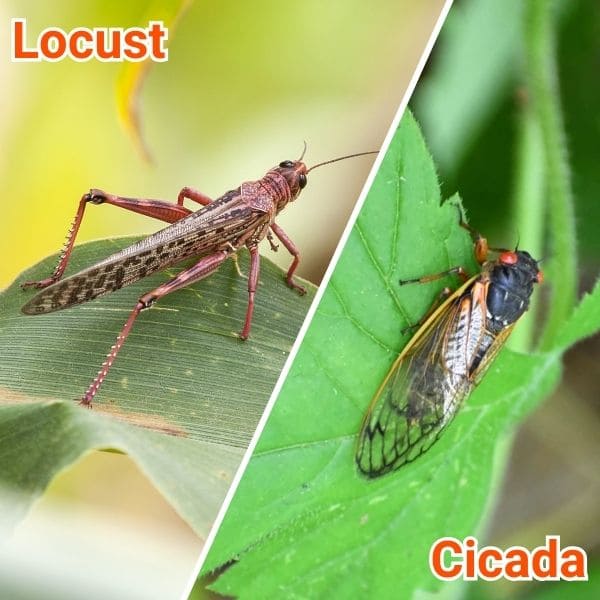
| Locust | Cicada | |
| Order | Orthoptera | Hemiptera |
| Collective Name | Swarm | Cloud or Plague (for periodical emergences) |
| Family | Acrididae | Cicadidae |
| Size | 1 to 4 inches | 0.75 to 2.25 inches |
| Diet | Herbivorous, feeds on various plants and crops | Herbivorous, feeds on sap from tree roots, stems, and leaves |
| Life Span | Up to 1 year | Up to 17 years |
| Habitat | Grasslands, deserts, agricultural fields | Woodlands, forests, suburban areas with trees |
| Life Cycle | Egg -> Nymph -> Adult | Egg -> Nymph -> Adult |
| Distribution | Worldwide, primarily in Africa, Asia, and Australia | Worldwide, with high diversity in temperate regions |
Difference Between Locust Vs Cicada
#1. Taxonomy
Locusts belong to the order Orthoptera and the family Acrididae including around 10,000 species of grasshoppers, typically classified under the genus Schistocerca.
They are known for their swarming behavior and short antennae.
Cicadas are part of the order Hemiptera and the family Cicadidae, comprising over 3,000 species under the genus Magicicada.
They are renowned for their periodic emergence and loud mating calls.
#2. Physical Appearance
Locusts range from 1 to 4 inches in length, with elongated bodies, short antennae, and strong hind legs adapted for jumping.
Their robust wings and muscular bodies enable them to migrate over hundreds of miles in search of food, often causing extensive agricultural damage.
Locusts are usually green or brown, blending into their grassy or desert habitats.
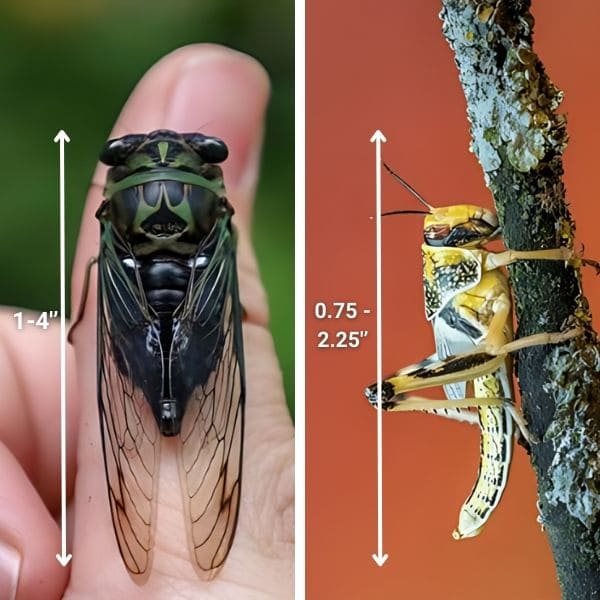
Cicadas have stout bodies and broad heads, ranging from 0.75 to 2.25 inches in size. Their coloration varies from black to brown, with some species exhibiting green or red accents.
They feature large, prominent eyes and long, transparent wings extending beyond their bodies.
While capable of flying, their flight is typically short and clumsy, mainly used to move between nearby trees and plants.
#3. Life Cycle and Development
Locusts undergo a simple life cycle with three stages: egg, nymph, and adult.
Female locusts lay eggs in the soil, which hatch into nymphs.
These nymphs, resembling smaller adults without wings, molt several times over weeks to months before becoming winged adults.
The entire development process can take several months to over a year, depending on environmental conditions.
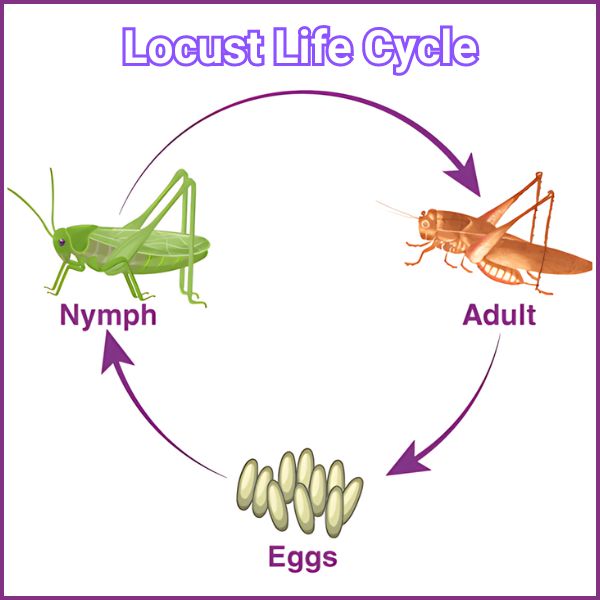
Cicadas also consist of egg, nymph, and adult stages but they have a more complex and lengthy life cycle.
Female cicadas lay eggs in tree branches, which hatch into nymphs that fall to the ground and burrow into the soil.
These nymphs live underground for several years, feeding on root sap, before emerging as adults.
The nymph stage can last from two to seventeen years, depending on the species, with the adult stage lasting only a few weeks to a few months.
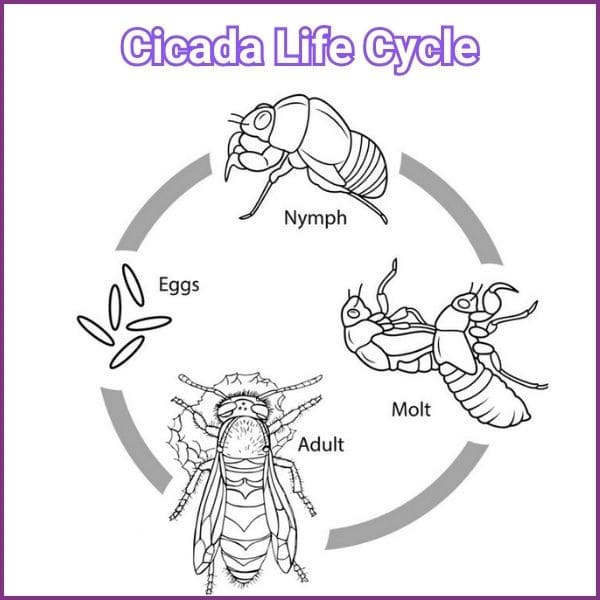
#4. Behavioral Patterns
Locusts are infamous for their swarming behavior, where vast numbers gather and migrate in search of food.
They are diurnal, feeding on various plants and crops causing devastating agricultural damage.
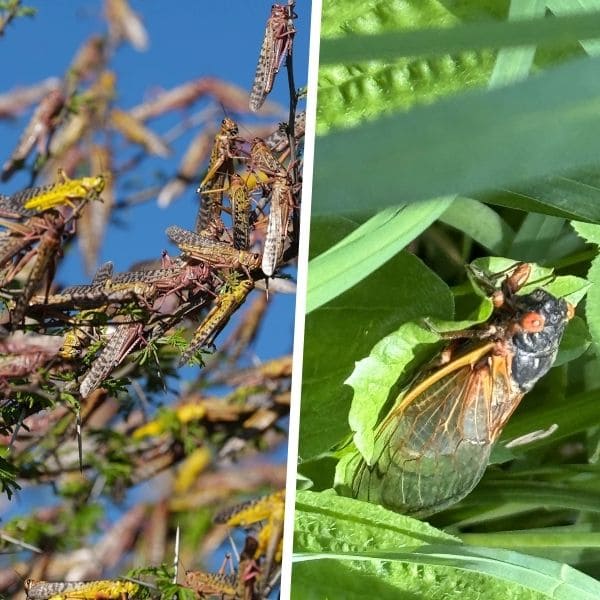
Cicadas, in contrast, are known for their loud, distinctive singing, produced by males to attract mates.
They are solitary and feed by sucking sap from tree roots, stems, and leaves. Cicadas are active during the day, with their singing most prominent in warmer months.
#5. Habitat and Distribution
Locusts thrive in diverse habitats, including grasslands, savannas, and deserts.
They are found worldwide, especially in Africa, Asia, and Australia, and can migrate long distances to exploit various environments for food.
Whereas, cicadas prefer wooded and forested areas, they feed on tree roots, and adults emerging to breed and lay eggs in trees.
They are also commonly found in temperate and tropical regions, particularly in North America and parts of Asia.
#6. Impact on Agriculture
Locusts have a profound impact on agriculture due to their swarming behavior.
Their swarms can devastate crops, leading to severe food shortages and significant economic losses.
Historical examples include the 2004 West African locust plague, which caused extensive crop damage and food insecurity.
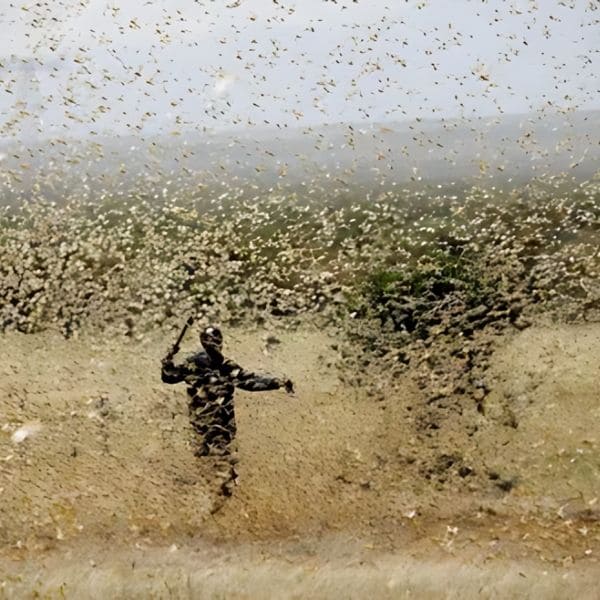
While less destructive, cicadas can impact agriculture during mass emergences. Periodical cicadas, emerging every 13 or 17 years, can damage young trees by laying eggs in branches.
However, their overall economic impact is minimal compared to locusts.
Notable cicada emergences, like the 2021 Brood X event in the United States, primarily cause a nuisance rather than significant agricultural damage.
#7. Communication Methods
Locusts communicate through movement and visual signals, synchronizing their movements during swarming to maintain group cohesion.
They do not produce significant sounds for communication but rely on collective swarming and migration to interact and survive.
In contrast, cicadas are renowned for their loud mating calls. Male cicadas produce these distinctive sounds using specialized structures called tymbals.
Specially, males often use these calls competing in a chorus to attract mates.
Similarities Between Locust Vs Cicada
#1. Basic Biological Traits
Both locusts and cicadas belong to the class Insecta, featuring segmented bodies, jointed legs, and protective exoskeletons.
They possess similar anatomical structures, including compound eyes for vision, antennae for sensing their environment, and specialized mouthparts adapted to their diets.
#2. Life Cycle Stages
Locusts and cicadas progress through similar life cycle stages beginning as eggs, hatch into nymphs, and undergo several molts before reaching adulthood.
This process ensures they develop the necessary physical traits to survive and reproduce.
#3. Feeding Habits
Locusts and cicadas are herbivorous, consuming various plants to sustain themselves.
Locusts feed on a wide range of vegetation, including crops and grasses, using strong mandibles.
However, cicadas primarily feed on the sap of tree roots, stems, and leaves using specialized mouthparts to pierce and suck fluids.
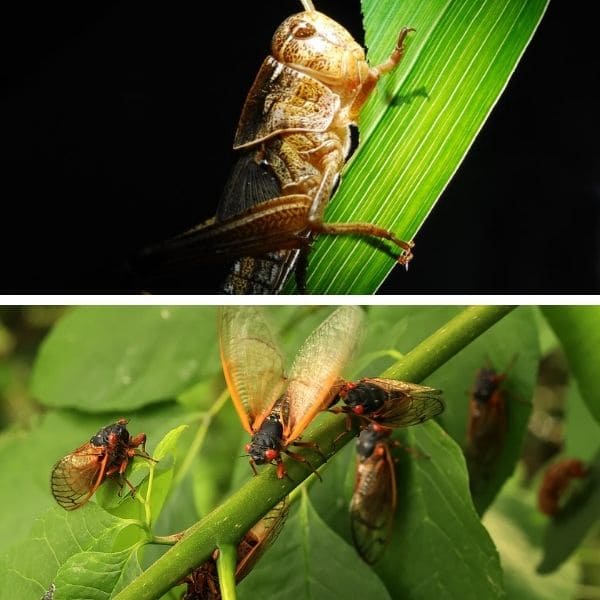
#4. Survival Strategies
Locusts and cicadas can survive thanks to camouflage and defense mechanisms. They use coloration to blend into their environments, avoiding predators.
Moreover, locusts can rapidly migrate to find food and escape threats, while cicadas have long nymph stages underground, emerging only when conditions are favorable.
Why Do People Confuse Locust Vs Cicada?
Historical Context
People often confuse locusts and cicadas due to historical context and linguistic traditions. This initial misidentification has had a lasting influence on terminology.
Early European settlers in America were familiar with locusts from biblical plagues but not with cicadas.
When they first encountered swarms of periodical cicadas in North America, they mistook them for locusts, thinking they were witnessing a locust plague.
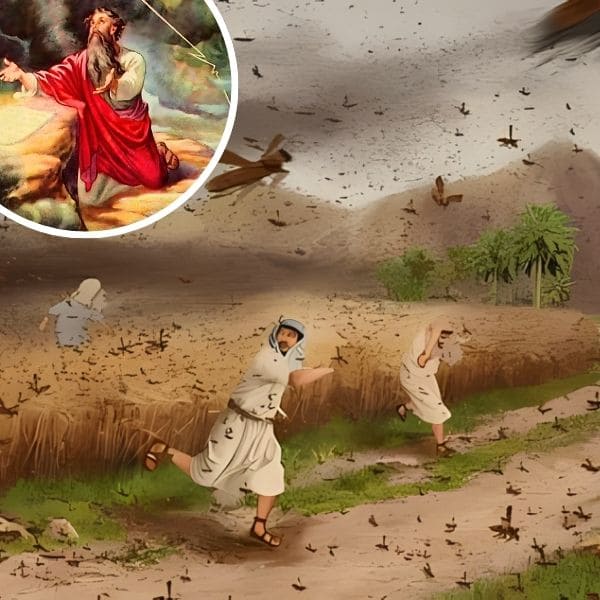
Cultural and Linguistic Influence
The term “locust” was broadly used by settlers to describe any large, swarming insect.
This linguistic tradition persisted over generations, especially in regions where cicadas frequently emerge in large numbers.
Despite scientific advancements distinguishing locusts from cicadas, the cultural habit of calling cicadas “locusts” remains in parts of American English.
